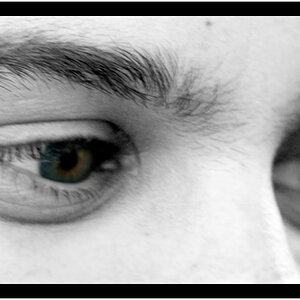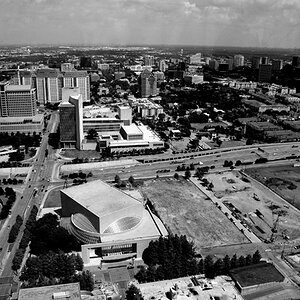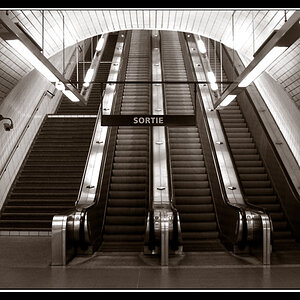JerryV
TPF Noob!
- Joined
- Apr 14, 2011
- Messages
- 3
- Reaction score
- 0
- Location
- New York City
- Can others edit my Photos
- Photos OK to edit
I just got a Sony alpha 33 DSLR. I had been using 3 separate step-ups of Canon point & shoot cameras over the past 9 years. I had gotten tired of carrying around a film SLR with much equipment and loved the idea of switching to a camera that I could slip into my pocket. But I am shortly going on a trip and decided to go back to SLR (but digital). A major reason I liked this was the ability to take High Dynamic Range (HDR) images to be tweaked with additional software (I will try HDR Express for this).
Neither the manual nor David Buschs Sony alpha DSLR were helpful with this. There are 2 distinct modes:
1. D-Range button on top, just behind on/off switch
Choices are off vs D-Range optimizer vs. Auto HDR (which I think I want)
This allow 1-6 EV levels with 6 being the greatest difference between exposures
The camera takes 3 exposures; at playback there are 2 images but neither one is marked. Image 1 (with Display button pressed) says D-R off, while Image 2 states HDR and the correct EV number (so I guess that this is the composite one; it is also the most evenly exposed. This dedicated D-Range button seems not to be available on all 33s, as I note from description in Buschs book.
2. A separate Bracketing control button on the Drive choice within the control button on the rear, right of the camera. This gives 3 separate images at different exposures (with choices of bracketing images (with choice of exposure differences between either 0.3 or 0.7 EV steps). It yields 3 nicely bracketed exposures at normal, overexposed and underexposed. Are these what I want to start my HDR tweaking to a single image with wide dynamic range between brights and darks?
Neither the manual nor David Buschs Sony alpha DSLR were helpful with this. There are 2 distinct modes:
1. D-Range button on top, just behind on/off switch
Choices are off vs D-Range optimizer vs. Auto HDR (which I think I want)
This allow 1-6 EV levels with 6 being the greatest difference between exposures
The camera takes 3 exposures; at playback there are 2 images but neither one is marked. Image 1 (with Display button pressed) says D-R off, while Image 2 states HDR and the correct EV number (so I guess that this is the composite one; it is also the most evenly exposed. This dedicated D-Range button seems not to be available on all 33s, as I note from description in Buschs book.
2. A separate Bracketing control button on the Drive choice within the control button on the rear, right of the camera. This gives 3 separate images at different exposures (with choices of bracketing images (with choice of exposure differences between either 0.3 or 0.7 EV steps). It yields 3 nicely bracketed exposures at normal, overexposed and underexposed. Are these what I want to start my HDR tweaking to a single image with wide dynamic range between brights and darks?












